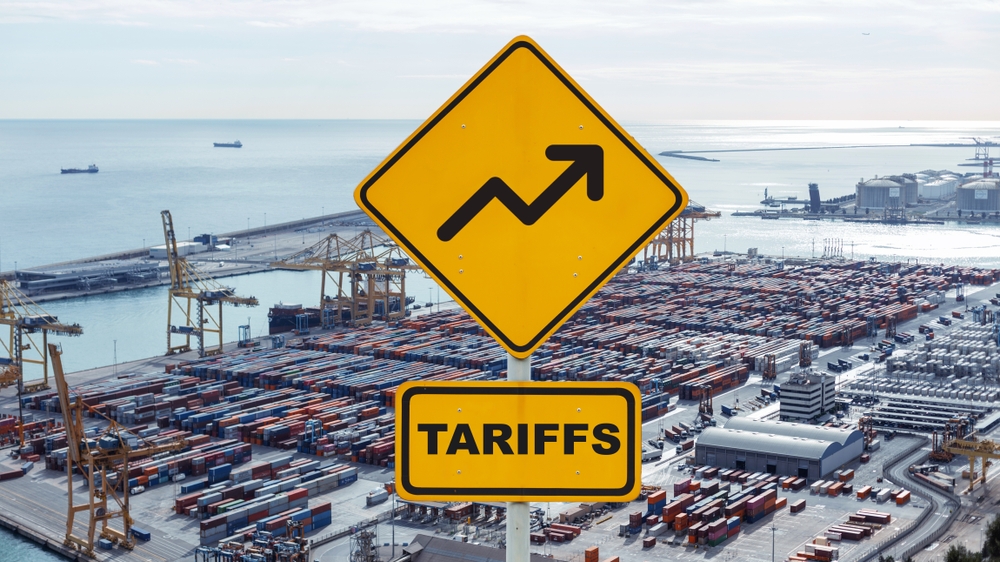Oil tariffs continue to shift, and they’re not moving alone. Route-risk surcharges and small-parcel duty changes are reshaping landed costs for specialty oil buyers. Questions? Contact us.
November’s cost picture is being pulled mainly by three levers:
- Section 301 (China) exclusion timing as we approach the late-month decision window
- India’s additional duties that push many lines toward ~50% effective rates
- The end of de minimis exclusions for low-value parcels that once kept samples and urgent spares duty-free
Layer on carrier attempts at GRIs/PSS (general rate increases/peak season surplus) and lingering Red Sea/Panama constraints, and your final invoice can swing based on origin, mode, and even how a sample ships.
This update distills what’s changed since October, what actually moves your landed cost now, and the actions to take before POs are placed or cleared. If you need help mapping your exact HTS (Harmonized Tariff Schedule) lines and lanes, Renkert Oil can turn this into an invoice-ready plan for your next deliveries.
Suzanne Kingsbury, Director of Quality
Oil Tariff & Policy Changes to Watch: November Snapshot
The most immediate, buyer-visible changes are India duty stacks and the de minimis elimination. Section 301 (China) largely holds steady this month, but key exclusions face a near-term renewal decision window.
- Section 301 (China): exclusions extended into late November; watch renewal. USTR extended certain product exclusions through November 29th, 2025, so plan for either (a) another short extension or (b) reversion to full Section 301 rates on the next business day if no action posts.
- India: additional duties now at/near 50% effective August 27—and sticking. The U.S. layered an extra 25% on top of reciprocal tariffs, taking many Indian-origin goods to an effective 50% rate. If you source additive packages, packaging, or process auxiliaries that originate in India, re-price your landed cost assumptions now.
- De minimis (low-value) exemption: eliminated as of Aug 29, 2025. Small parcels under $800 no longer skip duty. Many postal shipments were being assessed temporary flat duties ($80–$200) by origin tier, but after the transition, parcels moved to normal duty collection. This hits samples, test kits, and urgent spares you may have moved via post/express. Plan alternate entry strategies and consolidate where possible.
- Steel/Aluminum & selected industrial inputs: While not directly affecting most specialty oils, higher Section 232 rates (and a separate copper action) can ripple into drum, tote, and equipment pricing. If you’re rebidding packaging in Q4/Q1, expect suppliers to cite these inputs.
Legal Watch: Will the Tariffs Continue?
Federal courts have questioned the President’s authority to impose the new IEEPA-based tariffs, and the Supreme Court recently heard arguments that looked skeptical of those measures. For now, the tariffs remain in force, so continue to build them into your pricing models while the case proceeds.
Shipping & Route Risk: What’s Moving Freight Costs
Ocean rate volatility continues. Here’s what’s shaping November freight math:
- Red Sea risk premiums remain elevated. Industry trackers report continued incidents and heightened security posture through early November, keeping insurance/routing costs elevated on exposed lanes.
- Panama Canal: ops tweaks still in effect. The Canal extended service hours in October, but daily transits were trimmed from 32 to 31 per day effective November 1st. This is a reminder that slot discipline and booking windows still matter for schedule reliability.
- Carrier pricing attempts (GRIs/PSS) vs. mixed demand. Some ocean lines tried to raise base prices (GRIs) on Asia routes in late October. Fuel costs eased a bit in mid-October, which took some pressure off surcharges. Bottom line: pricing is choppy and depends on the specific route, so check each lane before you book.
- Context on spot rates: Benchmarks ticked up into November, so use index-based clauses when possible. Rather than a fixed cost, tie your rate to something like the Drewry WCI, FBX (Freightos Baltic Index), or Xeneta for your exact lane.
Practical Moves to Protect Your November Invoices
A short, buyer-ready checklist you can run this week. (And yes, we’ll help you do it.)
- Validate your HTS + origin per line item. Confirm whether your oils or packaging components sit on a Section 301 exclusion list through November 29th, and model both scenarios (extended vs. lapse) for POs that will clear in late November/December.
- Reprice anything India-origin. If you’ve historically sourced from India (containers, closures, certain additives), apply the additional 25% overlay now (bringing many lines to ~50%). Build a variance tracker so your accounts payable department catches vendor miscodes or under-collection disputes.
- Reroute smalls/samples away from postal pathways. With de minimis gone, shift to consolidated entries and pre-classify samples to avoid surprise flat duties. Align brokers and suppliers on documentation for Entry Type changes.
- Factor in war-risk and detour logic. For Red Sea-exposed routings, require carriers/forwarders to disclose war-risk premiums and detour surcharges up front. Compare rates to Cape of Good Hope routings for total landed time/cost.
- Mind the Canal calendar. If your lane relies on Panama, confirm booking status and buffer for potential delays from the 31-per-day cap. Require carriers to notify of rollovers (your container loaded on a later sailing) within 24 hours.
- Use index-tied freight where feasible. If you’re not on index-linked contracts, at least reference an external benchmark (e.g., FBX) during spot negotiations to counter unsustained GRI attempts.
What This Means for Specialty Oil Buyers
The tariff stack now changes by origin, mode, and parcel size, not just by commodity. This means your landed cost can swing on seemingly small routing or fulfillment choices.
The biggest near-term watch items are a potential Section 301 exclusion decision by November 29th, the India 50% tariff for any India-origin inputs in your mix, and the de minimis removal reshaping how you move samples and small replenishments.
Put Renkert Oil to Work on Your Landed Cost
When oil tariffs, exclusions, and route risk are in flux, you need a supplier that does more than take orders. Renkert Oil plans, models, and executes so your margins don’t get surprised by policy or freight.
Our logistics and quality teams will translate the November changes into an invoice-ready plan for your exact products and lanes. No guesswork, no last-minute scrambles.
- Flexible sourcing: We offer multi-origin options, including U.S. inventories on many products, to avoid high-tariff lanes when feasible.
- Line-by-line tariff mapping: We validate your HTS (Harmonized Tariff Schedule) codes, confirm any active exclusions, and model scenarios so you see the potential duty impact before you place POs.
- Origin and lane optimization: We compare multi-origin options and routing choices (Panama/Red Sea workarounds, port pairs, consolidation vs. parcel) to cut duty exposure and time risk without starving production.
- Inventory that protects production: With strategic positions and flexible pack sizes, we smooth short spikes and schedule slips so you’re not paying premium freight to keep lines running.
- Documentation and traceability on every load: COAs (certificates of analysis), lot traceability, and supplier documents arrive complete and on time, so customs and QA never slow your receiving dock.
- Proactive landed-cost forecasting: You’ll get a clear forecast that blends duty, surcharges, and bunker trends, updated as policies and carrier pricing change.
If November’s shifts are creating uncertainty, let’s turn that into a plan you can trust. Contact Renkert Oil to get a fast, line-item review and a routed, tariff-aware supply plan for your next deliveries.

